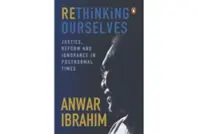'Syair Jaran Tamasa' is a narrative poem telling the story of the love affair between a warrior and a handmaiden at the Majapahit court. Photo: Fixi
Reaching a new audience with an archival book is always a good thing. Syair Jaran Tamasa, an ancient poem, exemplifies this. It is a book release by Fixi, known for its fiction in Bahasa Malaysia and English, published under its Fixi Retro label.
The transliteration of this poem from Jawi to Bahasa Malaysia (Arabic alphabet to Roman) was made possible by a handwritten manuscript dated 1804 from the British Library in London, titled MSS Malay B 9.





